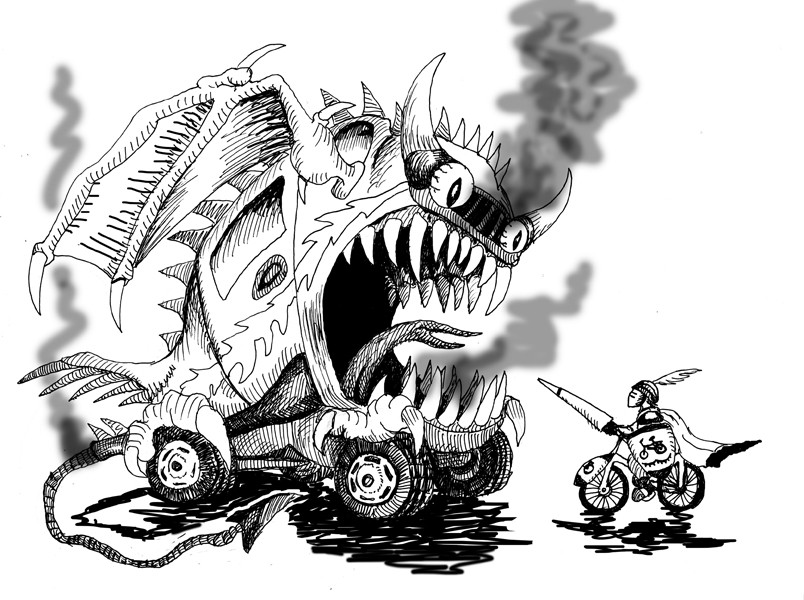Editorial
Transport Tragedy
I know two people who were killed by cars in the last two weeks.
The absolute shock, immediate impact and staggering sense of mortality that comes with such a sudden loss really makes you stop and wonder:
Wow, is everything arbitrary?
Deep in grief, I kept hearing that tired expression my friends were “in the wrong place at the wrong time,” but I began to wonder if it wasn’t the other way around; that maybe, cars are in the wrong place all the time.
A speeding, 4,000-pound machine doesn’t give the pedestrian, cyclist or other motorist much of a chance, does it? And in that moment of impact—when you hear that sickening crunch, or that final cry—who was ‘in the wrong’ is pretty much an afterthought because someone has died.
Last week, motor vehicle fatalities seemed to be everywhere on my radar.
The more I started thinking about it, reading about it, and seeing it on the television screen, the more I realized that perhaps it’s not arbitrary at all. It’s actually not about ‘chance’ at all, but about the fact that our car-crazed culture is a system that kills many people every, single day.
You may never read about the real effects of an oil war, or the devastating environmental havoc caused by the creation and maintenance of this Age of the Automobile in a mainstream newspaper.
But for whatever reason, motor vehicle accidents are the staple we’re fed; part of the ‘if it bleeds, it leads’ media mindset that ensures at least a news brief will be there each morning with our cup of coffee.
A five-year Statistics Canada study saw an average of eight Canadians killed each day in motor-vehicle accidents, with the deaths peaking in summer of 2004 at more than 10 fatalities a day.
These accidents account for more than one in six deaths among Canadian youth each year.
Transport Canada also suggests that there were nearly 172,000 total injuries in Canadian motor vehicle traffic collisions in 2009. Over 2,200 of those were fatal with 135,000 serious and personal injuries.
Given the shocking figures, how has car use not become a bigger public-safety issue?
Have we become desensitized to the conception of cars as killers, just as we’ve become desensitized to violent and sudden death?
Last week’s extremely graphic footage of two-year-old Wang Yue—who was run over twice by vehicles and left bleeding in a Chinese marketplace as 18 people went by without stopping—was an especially demoralizing example.
Closer to home—and to this reporter personally—a flatbed truck took a ‘right hook’ out on my buddy in Williamsburg, NY on the night of Oct. 19, reportedly dragging his bike for a block and leaving him crumpled on the side of the road.
The state of his body suggested he passed fully underneath the vehicle; he was pronounced dead on the scene, just 30 years old.
The scene of the crime also reportedly suggests the driver must have known he had struck something and, while the truck was located a few blocks from the accident, the person who killed my friend has yet to turn himself in.
There are over 20 million cars and trucks clogging Canadian infrastructure today, and an overwhelming sense of entitlement—and disillusion to the realities of car-related deaths—that feeds the rolling epidemic.
The number of shocking, violent and sudden losses of life that have become epidemic on our road systems makes me wonder why there isn’t some vigorous political response from our governments about the amount of motor vehicle-related deaths, improved infrastructure and accessible public transit alternatives.
Lives actually depend on it.
—Laura Beeston
Editor-in-Chief


_600_832_s.png)
